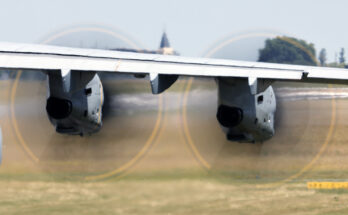by Stuart Slade, Senior Naval & Marine Power Systems Analyst, Forecast International.
The decision by Canada to select the BAE Systems/Lockheed Martin bid for the Canadian Patrol frigate replacement has sent shock-waves through the naval community. Taken in combination with the June 28 announcement that the Australian Navy had selected the Type 26 frigate for its ANZAC replacement program, the position of the Type 26 has dramatically strengthened. In less than a year, the Type 26 has vaulted from a small, also-ran program to the leading contender in the international surface combatants market. With the Canadian order, assuming the present “preferred bidder” status is confirmed with a signed order, a total of 32 Type 26 frigates are to be built.
To put this number into context, the previous non-U.S. market leader in the frigate category was the Franco-Italian FREMM class frigate, whose order book currently stands at 20 ships – with eight more possible orders in the wings. There are requirements for at least a dozen more frigates in this class extant, and the competition for these will be bitter. However, nothing succeeds like success, and the recent successes for the Type 26 frigate (and the corresponding defeats for FREMM) auger well for future Type 26 wins.
The reason behind the success of Type 26 is claimed to be the greater willingness of the British design team to modify their ship to meet national requirements. The three national variants of Type 26 are quite different in equipment fit and capabilities with, ironically, the British variant being the least complex of the three. However, it is also apparent that both the recent export orders have come from commonwealth countries There are significant suspicions that the rapidly approaching exit of the U.K. from the European Union was a major political factor in the selection of a British design. This interpretation sees these orders for British products as a mark of approval of the commonwealth toward the return of Britain to its privileged position within commonwealth economic circles.
This may or may not be true, but the fact remains that the Canadian and Australian orders have given the Type 26 frigate a major boost in the export market for surface combatants. An order book of the present size opens the way to significant additional sales, with Brazil and Chile being mentioned as possible future customers. British allies in the Middle East may also develop an interest in this frigate.
Another effect of the commonwealth orders is that additional reductions in the British Type 26 frigate program are becoming increasingly unlikely. Suggestions that the number of Type 26s to be built for the Royal Navy may be reduced to six are now regarded as much less plausible than they were as little as six months ago.
There is even talk of a cut from 13 ships to eight, and the construction of five Type 31e “low-cost” light frigates in place of the five being cut, being revisited. The problem the Royal Navy faces is not just that funds for new construction are short but that manpower is at a low ebb, and simply providing ships with crews has become a significant issue. The main problem is reported to be that the steadily declining Royal Navy force structure is not seen as providing an attractive or long-term career path. Some recruitment analyses have suggested that potential recruits see service in the Royal Navy as an alternative to being unemployed and a way of gaining experience that can then be exploited to start their “real” careers. A swing toward a larger force structure with its improved career prospects may resolve this issue.
Certainly the Australian and Canadian orders for Type 26 frigates have been a tremendous boost for the British naval construction industry. The question they face now is, can they build upon these successes to re-establish a long-term market presence?
Stuart Slade is currently the primary analyst for Forecast International’s Warships Forecast and Industrial & Marine Turbine Forecast. He is the author of United States Strategic Bombers 1945-2012, Littoral Warfare: Ships and Systems, Navies in the Nuclear Age and Multinational Naval Operations. In addition, he has been a regular contributor on the subjects of warships technology, military electronics, and naval systems to a number of leading journals.
For 50 years, Forecast International intelligence reports have been the aerospace and defense industry standard for accurate research, analysis, and projections. Our experienced analysts compile, evaluate, and present accurate data for decision makers. FI's market research reports offer concise analysis of individual programs and identify market opportunities. Each report includes a program overview, detailed statistics, recent developments and a competitive analysis, culminating in production forecasts spanning 10 or 15 years. Let our market intelligence reports be a key part of reducing uncertainties and mastering your specific market and its growth potential. Find out more at www.forecastinternational.com




